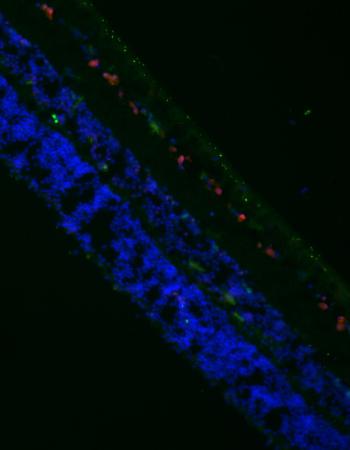Carnitine Deficiency and Oxidative Stress Provoke Cardiotoxicity in an Ifosfamide- Induced Fanconi Syndrome in Rat Model
Sayed-Ahmed, Mohamed M. . 2010
In addition to hemorrhagic cystitis, Fanconi Syndrome is a serious clinical side effect during ifosfamide (IFO) therapy. Fanconi syndrome is a generalized dysfunction of the proximal tubule which is characterized by excessive urinary excretion of glucose, phosphate, bicarbonate, amino acids, and other solutes excreted by this segment of the nephron including L-carnitine. Carnitine is essential cofactor for β-oxidation of long-chain fatty acids in the myocardium. IFO therapy is associated with increased urinary carnitine excretion with subsequent secondary deficiency of the molecule. Cardiac abnormalities in IFO-treated cancer patients were reported as isolated clinical cases. This study examined whether carnitine deficiency and oxidative stress, secondary to Fanconi Syndrome, provoke IFO-induced cardiomyopathy as well as exploring if carnitine supplementation using Propionyl-L-carnitine (PLC) could offer protection against this toxicity. In the current study, an animal model of carnitine deficiency was developed in rats by D-carnitine-mildronate treatment Adult male Wistar albino rats were assigned to one of six treatment groups: the first three groups were injected intraperitoneally with normal saline, D-carnitine (DC, 250 mg/kg/day) combined with mildronate (MD, 200 mg/kg/day) and PLC (250 mg/kg/day), respectively, for 10 successive days. The 4th, 5th, and 6th groups were injected with the same doses of normal saline, DC-MD and PLC, respectively for 5 successive days before and 5 days concomitant with IFO (50 mg/kg/day). IFO significantly increased serum creatinine, blood urea nitrogen (BUN), urinary carnitine excretion and clearance, creatine phosphokinase isoenzyme (CK-MB), lactate dehydrogenase (LDH), intramitochondrial acetyl-CoA/CoA-SH and thiobarbituric acid reactive substances (TBARS) in cardiac tissues and significantly decreased adenosine triphosphate (ATP) and total carnitine and reduced glutathione (GSH) content in cardiac tissues. In carnitine-depleted rats, IFO induced dramatic increase in serum creatinine, BUN, CK-MB, LDH, carnitine clearance and intramitochondrial acetyl-CoA/CoA-SH, as well as progressive reduction in total carnitine and ATP in cardiac tissues. Interestingly, PLC supplementation completely reversed the biochemical changes-induced by IFO to the control values. In conclusion, data from the present study suggest that: Carnitine deficiency and oxidative stress, secondary to Fanconi Syndrome, constitute risk factors and should be viewed as mechanisms during development of IFO-induced cardiotoxicity. Carnitine supplementation, using PLC, prevents the development of IFO-induced cardiotoxicity through antioxidant signalling and improving mitochondrial function.

PURPOSE:
Elevated intraocular pressure (IOP) is a major risk factor for glaucoma. One consequence of raised IOP is that ocular tissues are subjected to increased hydrostatic pressure (HP).…

Education in the ethical conduct of research that is acquired by postgraduate students is a key component
for their professional development in scientifi c and academic communities. This…

This study compared efficacy of two polyvalent antivenoms (Saudi Arabian and Egyptian), against lethality and pathophysiological changes of Leiurusquinquestriatus quinquestriatus (LQQ) scorpion …

